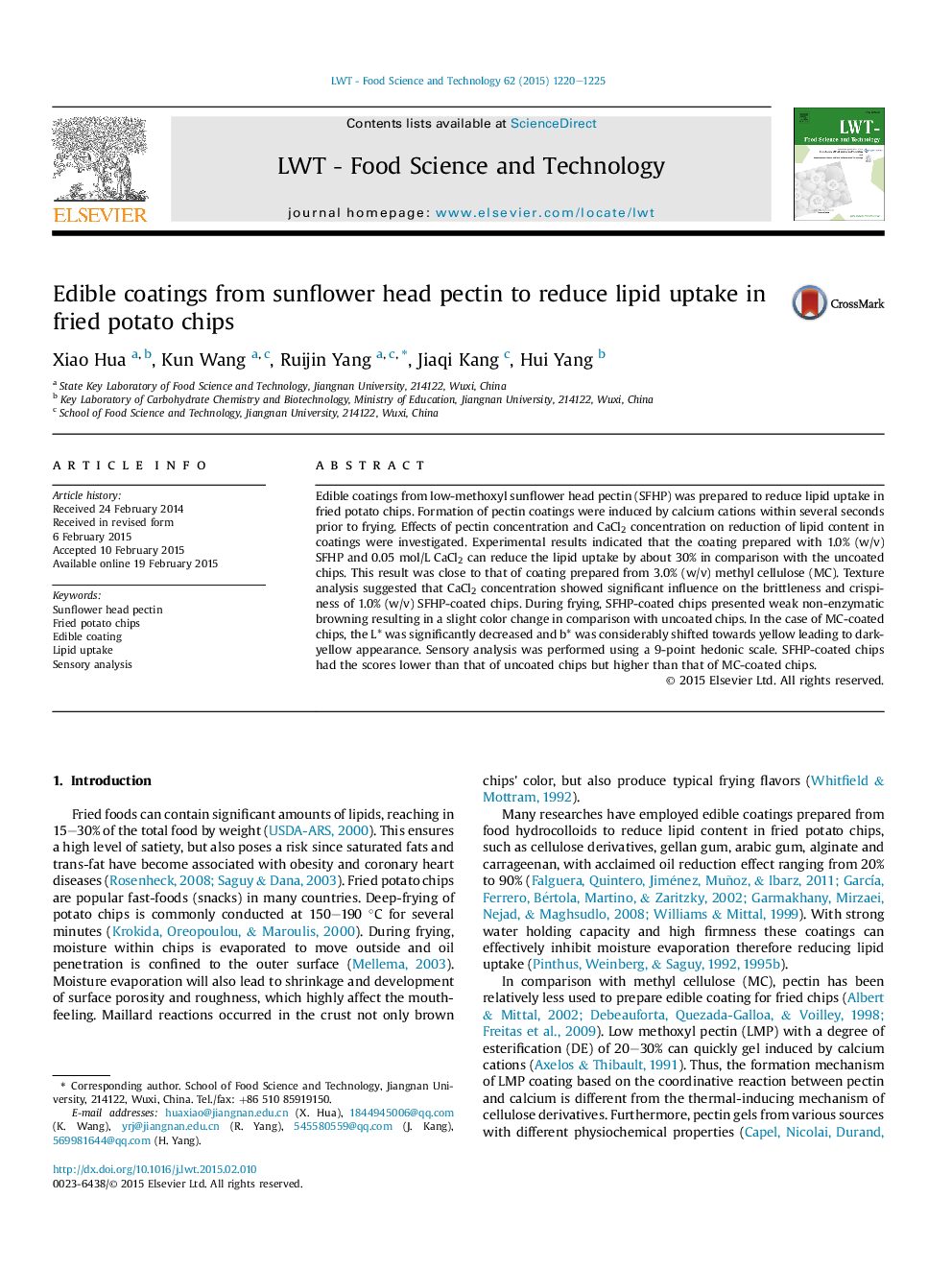| Article ID | Journal | Published Year | Pages | File Type |
|---|---|---|---|---|
| 6400679 | LWT - Food Science and Technology | 2015 | 6 Pages |
â¢Low-methoxyl sunflower pectin (SFHP) is used to make edible coating for fried chips.â¢Edible coating is formed by crosslinking of SFHP induced by Ca2+ in several seconds.â¢SFHP-coating (1.0% pectin, 0.05 mol/L CaCl2) can reduce about 30% lipid uptake.â¢SFHP-coating chips present sensory attributes close to those of traditional product.â¢Preparation of SFHP-coating is safe, time-saving and low-energy-cost.
Edible coatings from low-methoxyl sunflower head pectin (SFHP) was prepared to reduce lipid uptake in fried potato chips. Formation of pectin coatings were induced by calcium cations within several seconds prior to frying. Effects of pectin concentration and CaCl2 concentration on reduction of lipid content in coatings were investigated. Experimental results indicated that the coating prepared with 1.0% (w/v) SFHP and 0.05Â mol/L CaCl2 can reduce the lipid uptake by about 30% in comparison with the uncoated chips. This result was close to that of coating prepared from 3.0% (w/v) methyl cellulose (MC). Texture analysis suggested that CaCl2 concentration showed significant influence on the brittleness and crispiness of 1.0% (w/v) SFHP-coated chips. During frying, SFHP-coated chips presented weak non-enzymatic browning resulting in a slight color change in comparison with uncoated chips. In the case of MC-coated chips, the L* was significantly decreased and b* was considerably shifted towards yellow leading to dark-yellow appearance. Sensory analysis was performed using a 9-point hedonic scale. SFHP-coated chips had the scores lower than that of uncoated chips but higher than that of MC-coated chips.
